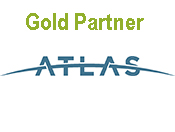|
Lessons from the FY 2011 NOAFs Each year, the Loss Prevention Committee (LPC) reviews Notices of Audit Findings (NOAFs) to identify practice tips, interesting trends, and perceived differences among the regions of the Massachusetts Department of Environmental Protection (MassDEP). For Fiscal Year 2011, we reviewed 368 NOAFs issued by MassDEP. Notices of Noncompliance (NONs) were issued in 131 (36%) of these NOAFs. This breaks down by region as follows:
We also compared the number of Level 2 audits (field inspections) to the number of Level 3 audits (comprehensive audits). We found that most audits were field inspections with little variation among the regions. In particular:
The types of noted noncompliance, or violations, seemed to fall into different categories for different regions except that each region identified a large number of violations associated with Notices of Activity and Use Limitations (AULs). The LPC identified the following primary two categories of violations for each region: WERO: nature and extent, and compliance with monitoring plans. Key Observations and Takeaways AULs MassDEP noted a range of issues with AULs, none of which was surprising based on the LPC's review of NOAFs in prior years. About 51 (39%) of all NONs included a violation relating to AULs, with the greatest number in SERO (23) and the least in WERO (6). The LPC hopes that the revisions to the AUL requirements in the upcoming regulatory reform package will reduce the number of issues we identify in future years. The most common issues are described below. Failure to reference the AUL in a subsequent instrument of transfer. At 310 CMR 40.1074(5), the MCP requires that any future deed, easement, mortgage, lease, license or occupancy agreement or any other instrument of transfer include at least a reference to the AUL. This requirement is repeated in the text of the AUL itself. The LPC notes that the LSP that oversaw the cleanup and initial filing of the AUL is often no longer involved with the site when a later property transfer occurs, and thus would not even have an opportunity to remind the potentially responsible person (PRP) of this obligation at that time. Failure to provide an appropriate sketch plan and/or survey plan. There are two types of identified errors in this category. First, in some cases no survey or sketch plan was included. At 310 CMR 40.1074(2)(a), the MCP requires reference to a survey of the parcel of land containing the AUL, and if the AUL is being placed on a portion of that property, a survey of the portion of the property subject to the AUL. This provision also requires that a sketch plan be included that shows the relationship of the AUL area to the limits of the disposal site. Second, in other cases, areas with pavement and areas with other cover required by the AUL are not identified on the survey. In one instance, the NOAF stated that the AUL required that some areas be covered with asphalt or concrete and other areas be covered with a minimum 3-foot thickness of clean soil, but the limits of these different areas were not identified. While the MCP does not explicitly indicate this is required, MassDEP clarified this in a Master Q&A from 2007, stating: If there is a barrier (e.g., some form of cap, pavement or building) within the boundaries of the AUL area that must be maintained to ensure a level of No Significant Risk, that barrier must also be depicted on either a sketch or survey plan. Which type of plan is required for the barrier depends on whether the restrictions that apply in the barrier area are the same or different from the restrictions that apply in the larger AUL area. If, for example, the AUL area includes both landscaping and pavement and the restrictions of the AUL are the same for both paved and landscaped areas (e.g. no excavation below 5 feet), the boundaries of the pavement and landscaped areas do not need to be surveyed. In such a case, a sketch plan will suffice to delineate the boundaries of the pavement and landscaped areas within the larger AUL area boundaries. If, on the other hand, an AUL restricts any or all "excavation under paved areas" and the paved areas represent only a portion of the AUL area (e.g. there are grassy areas which do not have exactly the same restrictions as the paved areas), a survey of the paved area is required because the excavation restriction applies only to the paved areas. The same reasoning would apply to cases where there are multiple barriers within the AUL area or different zones and restrictions within an area covered by a single barrier. Both of these issues relating to surveys and sketch plans were identified primarily in NOAFs from NERO. Inappropriate use of an AUL to restrict current Site uses. In most cases where this was cited as an issue, the AUL attempted to limit access to underground utilities for emergency or short term repair. As noted in MassDEP's May 1999 Guidance on Implementing Activity and Use Limitations, p. 6, when a site has underground utilities, excavation and repair of those utilities is considered a current site use. Current site uses cannot be restricted by an AUL. Failure to include appropriate evidence of signature authority. When an AUL is signed by a person on behalf of an entity such as a corporation or trust, the person must have authority to sign on behalf of that entity. Proof of such authority must be attached to and recorded with the AUL. MassDEP identified several AULs to which the appropriate signature authority was not attached. Improper alteration of the AUL form. The AUL form found in the regulations must be used. It cannot be altered except to replace bracketed language with the information that applies to that particular site. MassDEP identified several instances in which the AUL form was improperly altered, the incorrect information was provided, or omissions occurred. In most cases, several other errors in the AUL were identified. In at least one case, the only violation identified in the NON was striking standard boilerplate language from the AUL, and MassDEP required at a minimum the filing of a confirmatory AUL. Nature and Extent The LPC has focused on NONs citing a failure to adequately define the nature and extent of site contamination (in brief, "nature and extent") for the past several years, and the review of the Fiscal Year 2011 NOAFs was no exception. We are providing a sampling of the types of issues MassDEP identified in the 2011 NOAFs associated with nature and extent. In one case, only one monitoring well had been installed downgradient of a gasoline release. Over the course of the remediation leading to a 2010 Class A-2 RAO, groundwater samples had never been collected from this monitoring well. MassDEP determined that "characterization of the extent of groundwater impacts immediately downgradient of this release is incomplete." In another case, removal of chromium-contaminated soil occurred leading to a Class A-3 RAO in 2005. In the NOAF, MassDEP indicated that none of the soil samples from the site had been analyzed for PCBs and asbestos and that none of the samples from the residential area had been analyzed for cyanide, despite the prior use of the property as a landfill. Further, MassDEP indicated that only one sample was analyzed for RCRA 8 metals and only one post-excavation confirmatory sample was collected and analyzed for chromium. MassDEP considered this insufficient data for characterizing the extent of contamination at the site. As we have noted elsewhere, MassDEP increasingly is reviewing Phase II Reports. In one NOAF reviewing a 2009 Phase II Report, MassDEP indicated that the horizontal extent of total extractable petroleum hydrocarbons (EPH) in groundwater had not been determined because elevated concentrations of total EPH (212,000 ug/L and 342,000 ug/L) were detected in the two most downgradient wells in the last sampling round. The NOAF did not provide information on the specific EPH ranges or target compounds which were at issue at the site. MassDEP also identified as a violation the failure to include soil boring logs, construction logs, and a detailed characterization of the type(s), stratigraphy, and permeability of soil at the site in the Phase II Report or previously submitted reports. Have you ever identified a potential contaminant in a soil stockpile that you have not otherwise tested for at the site? In relation to a 2005 Class A-2 RAO, MassDEP noted that lead was detected in the soil stockpile generated during removal of a gasoline UST. MassDEP stated: "Given the age of the former on-site gasoline UST, the abutting residential properties, and the site's location within a Potentially Productive Aquifer, along with the detection of lead in the soil stockpile above applicable Reportable Concentrations, common scientific practice is to assess soil and groundwater at the site for the presence of lead and ethylene dibromide. However, samples were not collected at the site to rule out the presence of lead and/or ethylene dibromide in soil and groundwater or technical justification provided to support the omission of this information." MassDEP identified this as a violation of 310 CMR 40.0904(2) and 40.1004. In the review of a 2008 Class A-3 RAO, MassDEP identified the failure to characterize surficial soil in the source area as a violation of the risk assessment requirements. Soil at depth had been found to be adversely impacted by metals, but no surficial soil samples had been obtained in the source area. MassDEP stated: "A complete risk characterization to rule out risks associated with surficial and/or potentially accessible soils must implement data from locations considered to be accessible (0-3' bgs). Therefore, you are in violation of 310 CMR 40.0904, and additional corrective actions are necessary to address this violation." ROS / Class C In reviewing sites in ROS and those that have achieved Class C RAO, NOAFs appeared to focus on three questions: (1) are the operational requirements being met and/or is the monitoring identified in prior submittals such as the Operation, Maintenance, and Monitoring Plan (OMM Plan) being done; (2) has MassDEP been notified promptly of a failure of the remedial system; and (3) does the site continue to meet the conditions for ROS or Class C. We provide some examples of NOAFs focusing on these issues, and provide information on one interesting NOAF relating to feasibility. Failure to meet operational or monitoring requirements established in MCP submittals such as an OMM Plan. The types of violations identified for failure to follow the OMM Plan included the following:
Failure to Notify MassDEP of Failure of Remedial System. At 310 CMR 40.0893(6)(b), the MCP requires that MassDEP be notified within 30 days of obtaining "knowledge that the [ROS criteria] are no longer being met, including knowledge of a mechanical failure and/or need to substantially modify the remedial system or program." In several cases, MassDEP identified as violations late notification of mechanical failure of a remedial system that was documented in the subsequent ROS status report (submitted at a six-month interval) instead of within 30 days. In another case of a site in ROS with an OMM Plan, the selected remedy was passive LNAPL recovery. However, over many years, persistent LNAPL continued to be identified at one well when the groundwater table was at its seasonal low. MassDEP determined that when LNAPL was detected in that well in September 2010, "given the persistent reoccurrence of LNAPL following repeated purging of this well during August and October 2010, ... the effectiveness of the [system] in achieving source elimination and/or control and the remedial goal of reducing LNAPL thickness to less than the [upper concentration limit] is ... uncertain." MassDEP determined that knowledge of the need to modify the system was confirmed September 2010, but written notice had not been provided even in the next status report. Does the site continue to meet the conditions for ROS or Class C? Questions as to whether a site continues to meet the ROS or Class C standard are more complicated. Here are a few examples of NOAFs where MassDEP identified concerns: In one case in which ROS included operation of high vacuum extraction system for volatile petroleum compounds, the design airflow, groundwater extraction, and vacuum extraction rates were not being achieved. In addition, groundwater concentrations showed increasing trends in contaminants of concern, suggesting the system was not effective. MassDEP required the PRP to confirm that the ROS standard was being achieved in the next status report, or terminate ROS. In relation to a site in ROS, in 2007 MassDEP had received notice that the site was deactivating its groundwater extraction system after about three years of operation in order to assess whether remedial goals had been met. The system remained inoperative through MassDEP's inspection in late 2010. Data in the status report filed just prior to the inspection showed increasing concentration trends for several contaminants. MassDEP concluded that the source had not been controlled or eliminated, and that with the continuing prolonged shutdown the existing system was not likely to meet remedial goals. MassDEP determined that the ROS standard was no longer being met. MassDEP required the PRP to either terminate ROS or confirm that the ROS standard is being achieved in the next status report. A Class C RAO was filed in 1999 that stated that "a Permanent Solution will be achieved by Monitored Natural Attenuation (MNA) of chlorobenzene compounds through natural reductive dechlorination." A Remedy Operation Status Opinion was filed in 2010 that also stated that a Permanent Solution will be achieved through MNA. MassDEP reviewed the concentrations of chlorobenzene compounds over time. MassDEP indicated that analytical data from groundwater monitoring wells since 1999 did not show "significant reductions in concentrations of the various chlorobenzene compounds consistent with [the MNA] model." Instead, chlorobenzene concentrations appeared to have reached steady-state conditions, data did not show that naturally occurring oxidative conditions existed at the site, and "actual oxidation-reduction potential data has not been provided." MassDEP found that MNA was not likely to achieve a permanent solution in a reasonable time frame, and required submittal of either a revised Class C RAO or ROS. At another site that had filed a Class C RAO in 2003, the RAO indicated that "MTBE concentrations were expected to decline by natural attenuation and dilution, and that remedial goals may be achieved without active remediation." The RAO also indicated that Operation, Monitoring and Maintenance activities, including groundwater sampling to monitor natural attenuation, were required for the RAO. In the NOAF, MassDEP noted that MNA parameters such as dissolved oxygen, temperature, and oxidation-reduction potential were not being monitored as recommended by EPA and ASTM guidance in order to demonstrate that MNA was occurring. MassDEP stated that there must be a "destructive and/or detoxifying process" as opposed to dilution. MassDEP concluded that the RAO performance standards were not met, and required submittal of an RAO addressing these concerns. Feasibility. In reviewing a 2010 Class C-2 RAO, MassDEP determined that the conclusion of the feasibility analysis was not supported. In particular, the cost of the remedial action necessary to achieve a permanent solution, in this case soil excavation and off-site recycling, was estimated at about $300,000. The RAO states this alternative is not feasible mainly because the costs exceed the "asking price of similar homes for sale in" the same town. MassDEP stated that this analysis was not sufficient under 40.0860(7)(a) because it "omits the entire range of factors that must be considered." Well Condition and Abandonment During our review of the 2011 Fiscal Year NOAFs, we noticed several NOAFs, all of which originated in WERO, that identified violations or observations associated with the condition of monitoring wells. Here are several examples of the observed condition of monitoring wells that resulted in noncompliance being cited:
In some other instances, MassDEP noted that repairs were required, but did not identify this as a violation. It is not clear to us whether these wells were in better condition than the ones cited with NOAFs. LPC wonders what factors MassDEP considers when it reviews the conditions of monitoring wells. This is a topic that LPC would like to explore further.
|

































